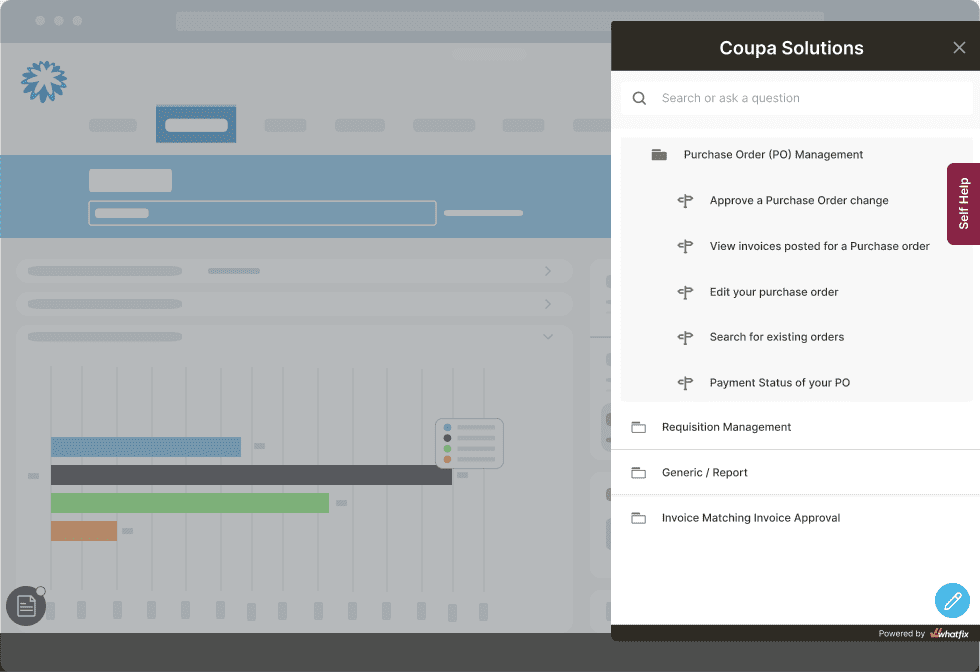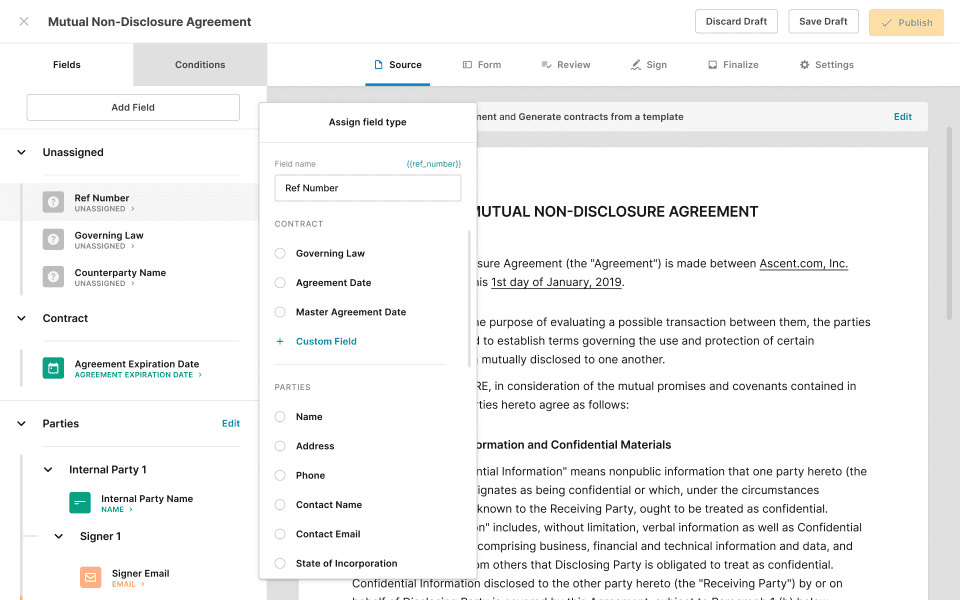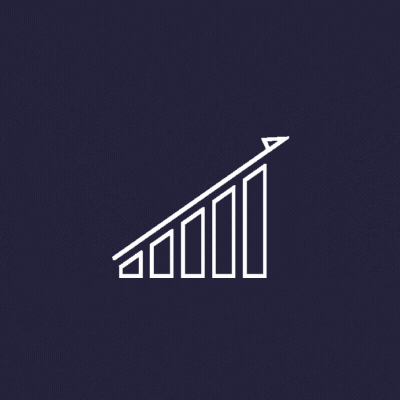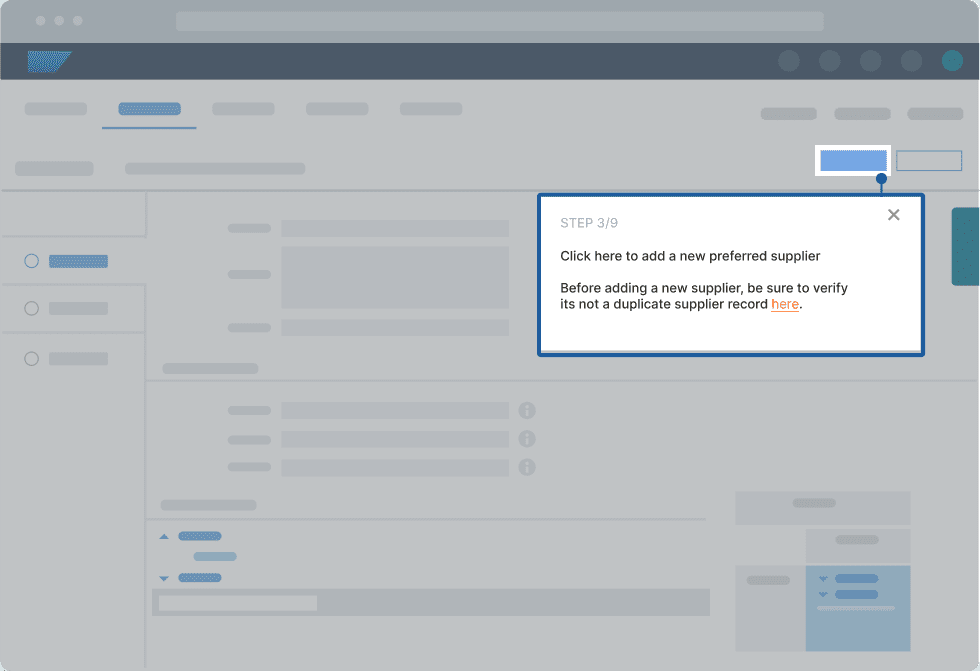
Samantha Rohn

A contract lifecycle platform serves as a single source of truth where you store contracts, collaborate on, share, approval, negotiate, execute, and renew them. It’s a digital brain where the contracting process lives, and you can:
For a tool that offers so much functionality, accordingly, CLM platforms have attracted the growing interest of enterprises who often have disjointed processes: a joint report by KPMG Law and the World Commerce and Contracting Association shows that digitizing the contracting process is now a priority for 76% of organizations.
And, why not?
Almost 85% of organizations—especially in B2B markets—indicate that reaching an agreement with their existing contract lifecycle and processes is frustratingly slow, both at a transactional and strategic level.
But, while enterprise contracting woes might explain the rising interest in CLM solutions, it doesn’t guarantee success. Gartner projects that by 2024, 50% of all first-time CLM implementations will fail to deliver the expected benefits due to an unrealistic strategic technology roadmap.
While you need a CLM platform as part of your digitization efforts, you need a strategic approach to CLM implementation to drive maximum ROI from your investment and to empower your end-users with the CLM processes, templates, workflows, and support to achieve their goals and objectives.
CLM implementation simply refers to deploying a CLM solution for managing your organization’s contract lifecycle—from choosing vendors to post-install training and maintenance. This software implementation is a critical step that relies on the IT team to set up and configure your CLM instance, enabling enterprises to drive CLM adoption through end-user training and performance support.

Here are nine steps to drive a successful CLM implementation.
Your CLM implementation project should start with an appraisal of what your contract workflow currently looks like, where you need improvements, and why those changes need to be made. When you clearly define those objectives, you can attach metrics and figures to them to measure the impact of your existing contract lifecycle management setup and advance a better argument for why you need a digital CLM platform.
What particular stage of the contract lifecycle does your organization encounter challenges with? At what stage do you spend most of the time without any commensurate ROI? Those are the friction points you need to document to understand the ideal CLM platform for your use case.
For instance, you might have a chaotic contracting process where stakeholders need help to build consensus since everyone has a slightly different version of the same Word doc. In such a situation, you need a CLM platform with stellar contract authoring and version controls.
Your implementation plan is the blueprint for how you intend to create an implementation team (both internal and external), engage with stakeholders to understand their pain points, roll out your CLM solution, and customize it to fit your use cases.
Depending on how your CLM platform of choice is designed, this can be as simple as using a drag-and-drop editor to reorder widgets and dashboards, draw workflows, assign stakeholders to each stage, and integrate with the rest of your legal, procurement, and sales stack.
In this phase, you’ll also be tasked with building your contract templates and workflows. This is highly dependant on your company’s industry, product or service, region, and other factors.
Include various stakeholders from your finance, legal, and sales teams on these conversations to help create efficient, intelligent, compliant CLM templates and workflows.
You can opt for external QA testers to evaluate key features of your CLM to ensure it’s working like it’s designed to. Better still, you can plan for a sandboxed release where a few stakeholders within your company can build mock workflows and try recreating their contract workflows inside your new CLM.
This stage should function as a positive feedback loop where you test features, flag any issues, get back to the drawing board to fix them, and repeat until you have a stable system that’s ready for deployment.
Enterprise software products usually come with a range of free and premium training and support resources such as 1:1 coaching, webinars, tutorials, wikis, course libraries (e.g., Duck Creek University, Snowflake University, etc.), and explainer videos users can watch on-demand.
But, in-app guidance takes it a step further by bringing helpful content right inside your CLM platform—exactly where your employee needs it the most.
IT teams can utilize a digital adoption platform (DAP) like Whatfix to create in-app guidance and contextual self-help user support that overlays on any CLM solution.

With a DAP, you can enable your CLM users with contextual guidance and support like:


“When they showed me Whatfix, I approached our CLM IT committee and said we cannot successfully implement our new CLM solution without Whatfix.”
Sheila Dusseau, Head of Global Legal Operations at Ferring
Slowly grant the rest of your organization access to your CLM platform. Depending on your company’s size, it might be best to have a phased rollout so that your contract management doesn’t grind to a halt while you’re getting your employees up to speed.
A behavior analytics platform can help you monitor user interactions inside your CLM, such as clicks and mouse hovers, as well as enable you to replay user sessions to see the issues your employees encounter from a first-person perspective.
Building off the data you collect from your product analytics, you can decide to:
Here are nine benefits of investing in a new CLM:
By default, most CLM platforms adhere to the highest data protection standards, such as ISO 27001 and SOC 2, which are designed to protect your agreements in both transit and storage. In contrast, an email-dependent contract lifecycle will expose sensitive data to employees who may have poor OPSEC and security training, and it’s only a matter of when, not if, your data will leak.
In its purest form, a CLM platform serves as a workflow and collaboration engine for designing and automating steps in your contract lifecycle. But, all that data you generate in the process can be rendered in graphs and dashboards that make it easy to measure your pipeline, classify contracts by stage, and create an estimate of your financial prospects.
CLM platforms help curb the risk of default by building bulletproof contracts that account for edge cases, speeding up contract-to-cash, and automating the approval process to avoid breaching agreements and incurring damages.
A 2019 analysis of the economic impact of DocuSign (by Forrester) showed that composite organizations that adopted the CLM platform over three years recorded a 356% ROI, saved $4 million on contract processing costs and grew their revenues by almost $339k within the same timeframe.
Suppose we extrapolate those figures to the entire CLM market. In that case, it’s easy to prove that a solution that speeds up the contract lifecycle, improves collaboration, and lets your salespeople focus on growing their pipeline will no doubt generate enough profits to justify your investments.
There’s only so much markup you can attach to a Word doc, especially if there are disparate versions of the same draft changing hands between your organization and your vendors (or customers).
A contract lifecycle platform limits each draft to one copy that’s saved on the cloud, where stakeholders can insert comments, assign action items to team members, and highlight, negotiate, or dispute specific clauses in full view of everyone involved in the contract lifecycle.

Contract lifecycle platforms speed up the contracting process and make it possible to create, edit, negotiate, and execute contracts faster than traditional methods permit. It all boils down to the digitally native nature of CLM platforms since they remove the lag traditional paper contracts suffer during the transit and negotiation stages.
On the surface, it might seem surprising that technical improvements can correlate with higher contract values. But, when you look closely at the data, they definitely do, even if by a marginal amount.
Considering that the contracting process eats up 18% of the sales cycle and that the average B2B sales cycle takes up anywhere between 83 days and five years (HubSpot), the time saved on the contract lifecycle can be used to nurture prospects and create more opportunities vs. going back on forth trying to close one deal.
On average, contract approvals take around 3.4 weeks. But, a CLM platform can reduce that timeframe by 82%, making it easier for suppliers and customers to negotiate, resolve conflicts, and flag potentially problematic clauses early on.
Whether you’re faxing paper documents or sharing Word docs via email, traditional contract management tools tend to scale poorly. For instance, fax documents lose quality in transit, while Word doc contracts usually end up a disjointed mess with multiple versions (Google LLC Contract – final(v12).docx).
Although it’s not intentional, it’s inevitable when you have a large organization or deal with partners whose contract lifecycle demands several stakeholders review, leave comments, negotiate, and sign off.
A contract lifecycle platform empowers large teams to collaborate on the same page with real-time edits and changes that are synced to one copy, shareable in one click, and with a digital paper trail where you can see everyone who’s contributed to a contract and their edit history.

Don’t forget these nine considerations when implementing a new CLM investment.
Have you built consensus, both with the C-suite and rank-and-file employees? Can you argue a strong case for why your organization needs a CLM platform? Can you use your company’s current contract footprint, combined with peer-reviewed industry standards, to plot a path to a positive ROI for your CLM implementation project?
You need support from the C-suite (who can either give you enough lifeline or kill your project on a whim) and general employees (who will eventually use your CLM platform day-to-day) to successfully deploy a CLM system.
Depending on your company’s software footprint, ideally, you’ll need a CLM that integrates seamlessly with your existing stack or lets you build custom add-ons using their RESTful API. Examples of tools you’ll need to ensure integrations exist include:
You need to create a comprehensive plan to coach your employees, encourage user adoption of your new CLM platform, and remove usability hurdles that may hinder employees from trying out your contract lifecycle tool.
Digital adoption platforms (DAPs) are designed to help organizations increase user adoption and engagement with new software platforms. They provide a range of features and functionalities, including interactive guidance, real-time feedback, and analytics, to help users quickly and easily learn how to use new software applications.
One of the leading DAPs in the market is Whatfix. Whatfix offers a comprehensive platform that helps organizations drive user adoption of new software platforms, including CLM tools. With Whatfix, organizations can create interactive walkthroughs, step-by-step guides, and tutorials that are integrated directly into the CLM platform. This allows users to access the information they need in real-time, as they are using the tool.
By using Whatfix, organizations can create a comprehensive plan to coach their employees, encourage user adoption of the new CLM platform, and remove usability hurdles that may deter employees from trying out the tool. For example, Whatfix’s contextual guidance feature provides employees with targeted assistance based on the task they are trying to perform, helping them to complete the task quickly and easily.
Whatfix also provides analytics tools that help organizations track user engagement and identify areas where additional training or guidance may be needed. This allows organizations to continuously improve the user experience and ensure that their employees are fully adopting and utilizing the new CLM platform.


Beyond the initial deployment, your CLM implementation blueprint should account for training and support. This can be via 1:1 coaching, webinars, courses, and guided learning paths customized for each user role. You can also use digital adoption tools like Whatfix to insert contextual reminders, cues, and guides into your CLM platform’s interface without disrupting the user experience.
For the most part, if you opt for a cloud-based CLM, your provider is responsible for the bulk of the security infrastructure you need; your role is limited to teaching your employees how to defeat social engineering tricks and avoid scenarios like when a fraudster sent Google and Meta fraudulent invoices worth $100 million and $21 million respectively, and they just paid up.
If you decide to self-host, that responsibility goes a notch higher since you now have to secure your physical, virtual, and human infrastructure from compromise.
Can your CLM of choice support your organization if you grow your team’s headcount by 50% in one year? Mostly, yes, since SaaS scales essentially infinitely.
But you need to read the fine print: a barely-bearable pricing structure might become exorbitant when your company scales further and gets bumped into a higher pricing tier by your provider. Instead of switching to a different provider when that happens, it’s better to research thoroughly and stick with a solution that offers the most value for money as your organization grows.
Before you commit, ensure your shortlisted CLM options permit customization so that you can reorder interfaces, edit contracts, share access, and collaborate with your team members, customers, and vendors without writing code.
A contract lifecycle platform should be designed to adapt to your organization’s needs. Whether it’s an NDA that’s a few paragraphs long or 20 pages of dense legalese you’re drafting, a CLM should help you start from a template, edit without limits, and customize to each scenario and the size of the counterparties you’re dealing with.
A CLM platform should empower your organization to gather and analyze data across the contract lifecycle, build financial models that cross-validate your sales forecasts, generate workflow summary reports, user reports, etc.
Enterprises will face CLM implementation challenges, including these common issues:
Suppose you can’t create a strong argument for why your organization needs a CLM software. In that case, most rank-and-file employees will probably default to thinking it’s yet another misguided digital transformation effort that’s bound to fail and be shelved within a few years. Be sure to have contextual information and support on how the new CLM will improve processes and productivity to overcome resistance to change across your workforce.
If you can’t get full backing from your organization’s leadership, it’s harder to requisition the resources—money, personnel, third-party implementation partners, etc.— that are required to make it a success.
Once your CLM deployment is in motion, you can’t freeze everything randomly to assemble the resources you need halfway in, such as hiring an implementation partner, buying a data transfer tool, etc. While you might eventually manage to implement your CLM solution with such a haphazard approach, it will draw out your timeline, cost significantly more, and create opportunities for long-running mistakes that can set you back by weeks or months.
This is more of an issue when a company doesn’t have existing contract processing processes and everything is done on an ad-hoc basis. As a result, there’s no straightforward way to collect all your contracts, convert them to digital format, and export them to your preferred CLM platform.
Whether it’s between you and your company’s leadership, your employees, suppliers, implementation partners, or even your legal team, poor communication is deadly. A CLM deployment is a complex undertaking where you combine cutting-edge technology with delicate processes that need to be designed carefully. If the responsible stakeholders don’t stay in touch and ensure they’re on the same page, you might miss targets, build out unnecessary features and customizations, or even have to scuttle the entire project after months of an impasse.
Every CLM implementation will be contextual to an organization’s needs and desired outcomes. However, companies can follow these five best practices to help kickstart and positively influence their CLM implementation.
Let’s refer back to those figures by Gartner for a moment: if half of first-time CLM deployments are at risk of failure because of unrealistic strategic technology roadmaps, then it’s clearly a failure of leadership.
Often, large enterprises embark on digital transformation projects without clear priorities, extensive research, effective project management, and enough internal guidance to make the effort work. On their part, employees make half-hearted attempts to make the new piece of software part of their workflow before they revert back to their well-worn processes and tools.
Any successful CLM deployment must start with clear guidelines from leadership: yes, it’s up to your core implementation team to set a roadmap, bring in external experts if necessary, and create a training and adoption regimen before your CLM implementation commences.
Set measurable goals for each stage of the CLM implementation process and the entire project. This helps you report back to the C-suite on your progress and start remediating early if you’re at risk of falling behind schedule. More importantly, during the testing phase (and even after your deployment), when you try out your CLM in a sandbox, make sure you closely monitor metrics such as:
During the testing and deployment phase, your implementation metrics will help you keep your CLM implementation on course, while live production metrics will help you prove ROI and identify (and solve) bottlenecks in your contract lifecycle.
Ideally, your CLM platform should have native collaborative features so that multiple team members can edit contracts concurrently, chat and leave comments on drafts, restrict access by role and identity, build workflows with dedicated assignees, and tackle different parts of the contract lifecycle using pre-set automation rules.
But, instead of letting usage slowly ramp up, you can demonstrate these features to your employees to make a clear argument that your CLM is designed to revolutionize how they work together on contracts instead of just ticking off a digital transformation checkbox.
Keep exploring integrations that can help you sync your workflow with your contract lifecycle—most mainstream CLM platforms support hundreds of integrations with Salesforce, Microsoft 365, Netsuite, SAP, HubSpot, etc., that are designed to simplify the contract-to-delivery process so that you can generate and sign contracts in your CRM, sync contract details with your ERP, and automatically update your customer databases.
You can even take it a step further and build your custom applications with your contract lifecycle platform’s RESTful API and design workflows that are tailor-made for your company’s needs.
Your contract lifecycle platform will eventually grow into its role as business intelligence that gives you detailed insights into your commitments and obligations, your customers’ and partners’ risk profiles, and your financial standing as a function of your expected receivables and costs.
To make the most of that data, you should be proactive with:
There’s a significant possibility—one in two, precisely—that your CLM implementation will be a disastrous waste of money that doesn’t live up to its promise. And, considering contract lifecycle platform licenses can cost upwards of $100k, such a wasteful effort might put your department under the spotlight for bad reasons and harden its resistance to change.
After you’ve successfully deployed your CLM platform, your employees will need ongoing coaching so they can make it a part of their contract lifecycle workflow, learn to navigate its UI, and use it to its full potential.
Whatfix helps enterprises unlock value from their CLM investment—our product adoption platform is designed to embed itself inside your enterprise software stack and to help you design learning programs that teach your employees how to use mainstream SaaS applications. With Whatfix you can:


Thank you for subscribing!